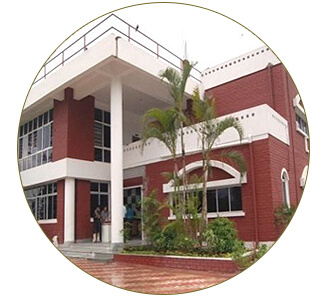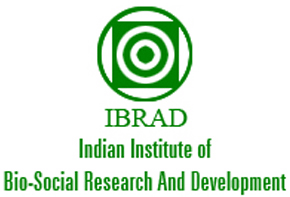Holistic Sustainable Tribal Development: Ecosystem Restoration for SDG
Objectives:
- Understanding features of landscape and its interrelationship with social system and development of Community Resource Persons as social change makers for Holistic Tribal Development through convergence of sectoral resources
- Develop Action Research methodology and demonstrate process of tribal entrepreneurship for climate resilient organic farming, nutrition vegetable garden to mitigate malnutrition
- Intervention for Sustainable Agri-business and demonstrate adoption of appropriate technology for introducing commercial agriculture and horticulture crops, pasture development and establishing indigenous seed banks
- Identification of Ecosystem Services and conservation of rare, endangered, endemic plants and establishing herbal gardens, preventive health care, revival of traditional knowledge, non – destructive harvesting and processing of NTFPs, production of saplings in nurseries for plantation in the village
- Short term residential courses, immersion for the NFST research scholars, as development practitioners by bridging tribal research with on field development initiatives
- Develop International collaboration for knowledge partnership and showcasing the outcomes of MoTA supported projects at the global level
- Training for Sustainable Forest Management for FRA and documentation of good practices
Application of Blended Digital Learning Based on Science Communication For Field Capacity Development For Climate Resilient Livelihood catalysed and supported by National Council of Science and Technology Communication, DST, Government of India.
Objectives:
- Community Need Analysis to assess knowledge and skill gaps for developing climate resilient livelihood
- Develop IEC materials through application of digital technologies for promotion of climate resilient livelihood
- Develop methodology of science communication through blended digital learning for capacity building of the rural community focusing on tribal community, women and youth for climate resilient livelihood
- Design communication strategy through blended digital learning
- Organise village level awareness campaigns, trainings and virtual exhibitions for capacity Development of the community members through applications of blended digital learning for developing climate resilient livelihood
- Field testing of science communication outcomes in 2 villages per district
- To have a comparative study of the recipients from the tribal and non-tribal communities
Support Organisation under West Bengal Accelerated Development of Minor Irrigation Project in four districts of West Bengal funded by Water Resources Development Department, West Bengal
As Support Organisation under World bank funded West Bengal Accelerated Development of Minor Irrigation Project implemented by the Water Resources Development Department, Government of West Bengal since 2012 working in four districts, Bankura, Coochbehar, Dakhsin Dinajpur and Uttar Dinajpur covering more than 400 villages and impacting more than one lakh individuals. Engaged in formation of Water User Associations and their capacity building for managing the irrigation systems and develop sustainable livelihood through agriculture, horticulture and fisheries based activities, convergence with the line departments, facilitating transfer and adoption of new technologies, promoting agri business and empowering women.
Objectives:
- Provide comprehensive training and support to Water User Associations( WUA).
- Develop capacity within DWRID to monitor and support WUAs.
- Involving other line agencies like agriculture, horticulture and fisheries to maximize the benefits of the water that will be made available to the beneficiaries.
- Enhance agricultural productivity by small and marginal farmers by providing adequate and dependable irrigation facilities round the year.
Developing a Conceptual Framework for Sustainable Tribal Development in saturation mode through the Convergence Approach in collaboration with the SCSTRTI, Odisha funded by the Ministry of Tribal Affairs, Government of India
Objectives:
- To document the existing policies, acts, programs related to Tribal Development
- To identify the success and failure cases of implementation of the policies and analysis of the factors of success and failures
- To identify the bottlenecks for implementation of the Tribal development policies
- To prepare a repository of best practices and learnings
- To develop a conceptual framework for Sustainable Tribal Development based on evidence-based and place-based studies
Participatory Forest Mosaic Landscape Management for Ecosystem Restoration in West Bengal, Odisha and Chhattisgarh
The decade of 2021-2030 is declared by the Un as the Decade of Ecosystem Restoration aiming to prevent, halt and reverse the degradation of ecosystems. The natural ecosystems support all life on earth and are the only sources of food. The life and livelihood of people depends on the ecosystems and thus maintaining the ecosystem health is crucial for poverty reduction, combating climate change and conserving biodiversity.
IBRAD has designed the project with the objectives to develop capacity of the forest front line staff and the community institutions like Joint Forest Management Committees who are responsible for conserving the forest in partnership with the forest department for forest ecosystem restoration of their designated areas by preventing, halting and reversing the drivers of degradation.
The project is being taken up on pilot basis with two Joint Forest Management Committees under Sarenga Range in South Bankura Forest Division, West Bengal, Lodha, Mankidia and Hill Kharia PVTGs under Mayurbhanj district in Odisha, Baiga PVTGs of Mundadadar, Jholabahar, Khuripani and Ghoghra villages in Kabirdhm district Chhattisgarh in collaboration with the Forest Division. The field staff of the forest department and the community are being trained on the methods of delineation of ecosystem boundaries, collect baseline data based on scientific criteria and indicators, identify the drivers of degradation, participatory microplanning for reversal of the process of degradation and restore the ecosystems, implementation of the plan and periodic monitoring to measure the changes against the standard criteria.
Objectives:
- To involve the local community to identify the landscape and the drivers of degradation
- Identify the existing state of degradation of the natural ecosystems through baseline studies
- Develop the capacity of the communities for taking actions to prevent and halt the process of degradation and
- To take measures to restore the degraded ecosystems
Women Empowerment for Ecosystem restoration and Sustainable Livelihood Development in the states of West Bengal, Odisha and Chhattisgarh
Achieve gender equality and empower women and girls is one of the Sustainable Development Goals (SDG – 5). Though there have been some marked changes in reducing discrimination against women and girls but the discriminatory laws and social norms are pervasive and requires strategic and targeted interventions to achieve the goals.
The project designed by IBRAD aims at developing the steps for empowering women and girls, particularly the tribal women and girls to exercise their choices, increase autonomy and lead a dignified life.
The process includes identification of the latent talents among the women and girls, creating an enabling environment to utilize their talents, form a group of like mined women for peer learning and confidence building, capacity building through training for developing skills to strengthen and diversify livelihood, providing hand holding and monitoring with encouragement and timely corrective actions wherever is needed, ensuring support from the menfolk of the family and society, showcasing the achievements of the women and celebrating their success, developing new rituals for facilitating change in the stereotypes and attitude towards women.
The project is being implemented in Bankura and Jhargram districts of West Bengal, Mayurbhanj district of Odisha and Kabirdham district in Chhattisgarh
Objectives:
- To understand the dormant potential of the women
- Creating and enabling environment to utilize the potentials
- Formation of institutions for the women to initiate the activities
- Develop the capacity of the women for conservation-based sustainable livelihood development
- Develop a synergy among the women and men to sustain the initiatives
- To develop entrepreneurship and business plan development
Develop models of Climate Resilient Sustainable Livelihood Development particularly for the small holder tribal farmers
Tribal communities inherently depend on the forest for their livelihood and socio cultural practices. However, the degradation of forests not only have negative impact on the tribal livelihood but also have made them more vulnerable and risk prone due to limiting the forest ecosystem services of soil nutrient cycling, maintaining water cycles, biodiversity loss impacting pollination and erosion of traditional knowledge and practices. The challenges are becoming more aggravated due to the changing climatic conditions.
The project is designed with an objective to develop capacity of the Particularly Vulnerable Tribal Groups (PVTGs), namely Lodha, Mankidia and Hill Kharia PVTGs under Mayurbhanj district in Odisha, Baiga PVTGs of Mundadadar, Jholabahar, Khuripani and Ghoghra villages in Kabirdhm district Chhattisgarh, Chhoto Koyma, Debardanga, Patgara, Tiyakathi villages in Bankura and Jhargrm districts of West Bengal for adoption of conservation based climate resilient livelihood practices following the approach of Integrated Agro-Forest Mosaic Landscape Management.
The uniqueness of the project is that it is being implemented primarily by using the method of Digital Ethnography and Training by using Digital Platform. The village landscape is identified along with its constituent ecosystems in consultation with the local forest department functionaries. Nine types interdependent and coherent activities are identified through participatory microplanning including organic cultivation, water conservation and fishery, vermi compost production, conservation of rare and endangered medicinal plants through establishment of herbal gardens, revitalization of traditional crops and cultivars and developing seed bank, fruit trees plantation, silvi pasture development, community nursery and non destructive harvesting, processing, value addition and marketing of NTFPs. Community institutions in the form of CIG (Common Interest Group) are formed, new social orders are developed for implementation of the activities at the landscape level.
Objectives:
- To understand the impacts of climate change on the livelihood of the community particularly the smallholder tribal community in a given landscape
- Identify the existing practices for climate change adaptation
- Identify the traditional knowledge and practices for climate change adaptation
- Formation of community institutions and their capacity building for climate-resilient livelihood development
- Implementation of the skills learnt and develop replicable models
Participatory Biodiversity Conservation for conservation of Rare, Endangered and Threatened plants
Traditional knowledge refers to the long standing wisdom, tradition, practices of the local communities that are mostly orally transmitted through generations and are imbedded with the cultural practices of the community through rituals, songs, folklores, legends or even traditional laws. It originates based on the traditional lands, resources, kinship and community relations and are relevant to the natural and cultural context based on which it is developed. Therefore, such knowledge and practices will become irrelevant and get eroded if the natural context, the natural ecosystems of the area gets degraded.
The project of IBRAD is designed to identify the traditional knowledge and practices of the tribal communities in terms of traditional health practices, identify the natural ecosystems that produce the herbs for treating the ailments, identification of the plants and their therapeutic uses, digital documentation of the knowledge system, identify the present status of degradation of the ecosystems and the threat status of the species as per Red Book, in situ conservation of rare and endangered plants and also ex situ conservation through establishment of Herbal Gardens.
Objectives:
- To document the plant biodiversity and its threat status in a given landscape by involving the local community and document following the guidelines of People’s Biodiversity Register
- Develop a database and digital repository of the existing plant diversity of the area
- Forming community institution and capacity building for in situ and ex situ conservation
- Establishment of community herbal garden and community seed banks for conservation of wild and agriculture biodiversity
- Develop mechanism for participatory monitoring and evaluation



